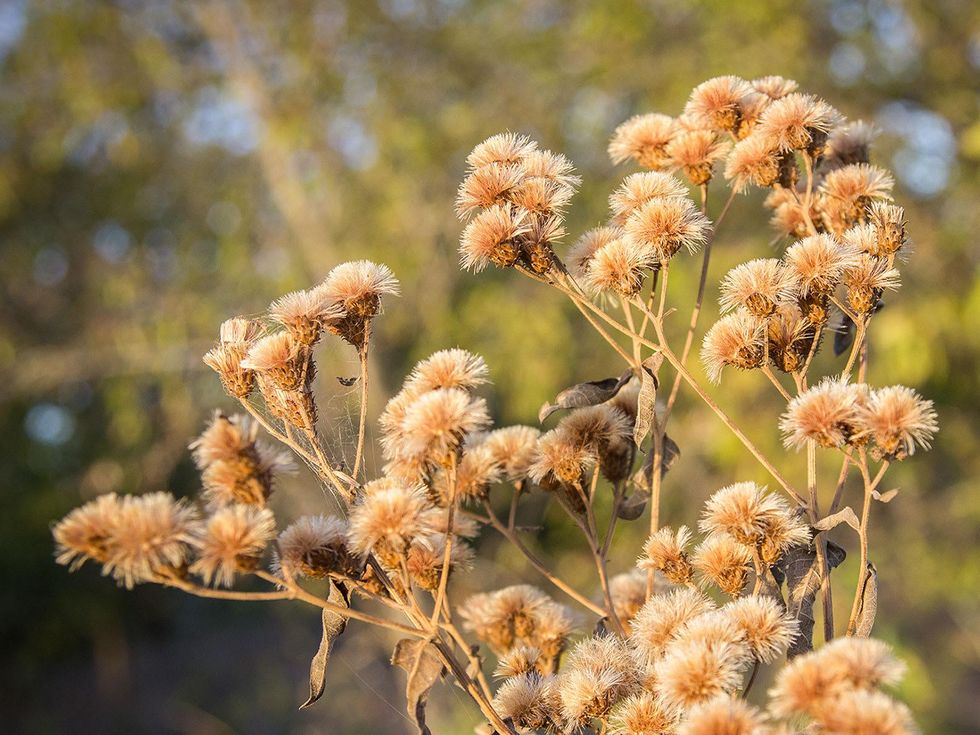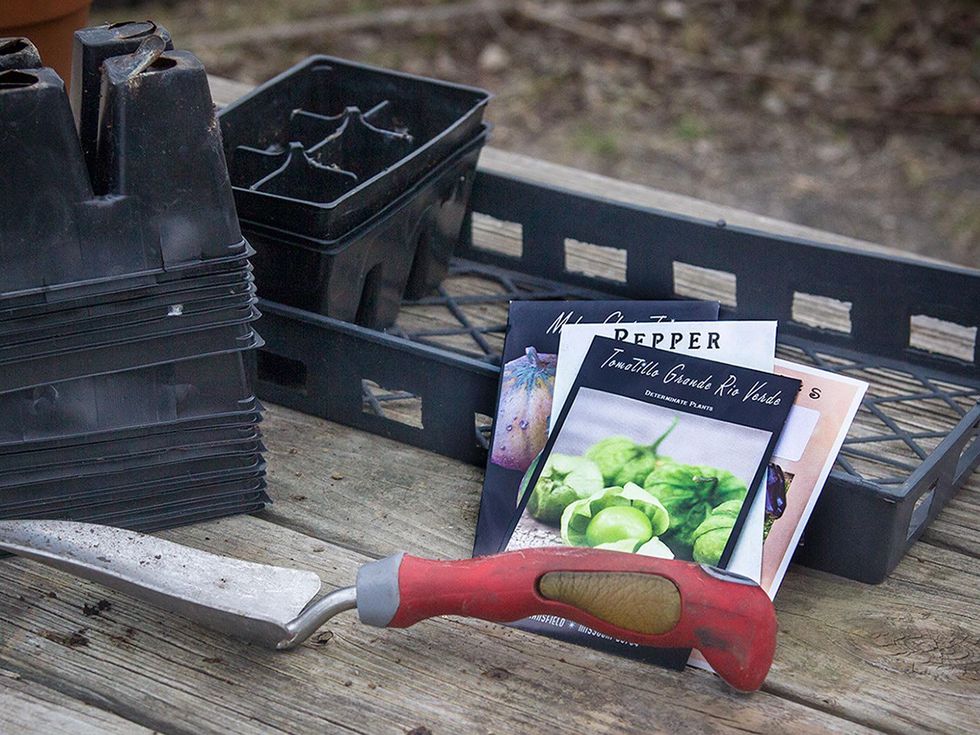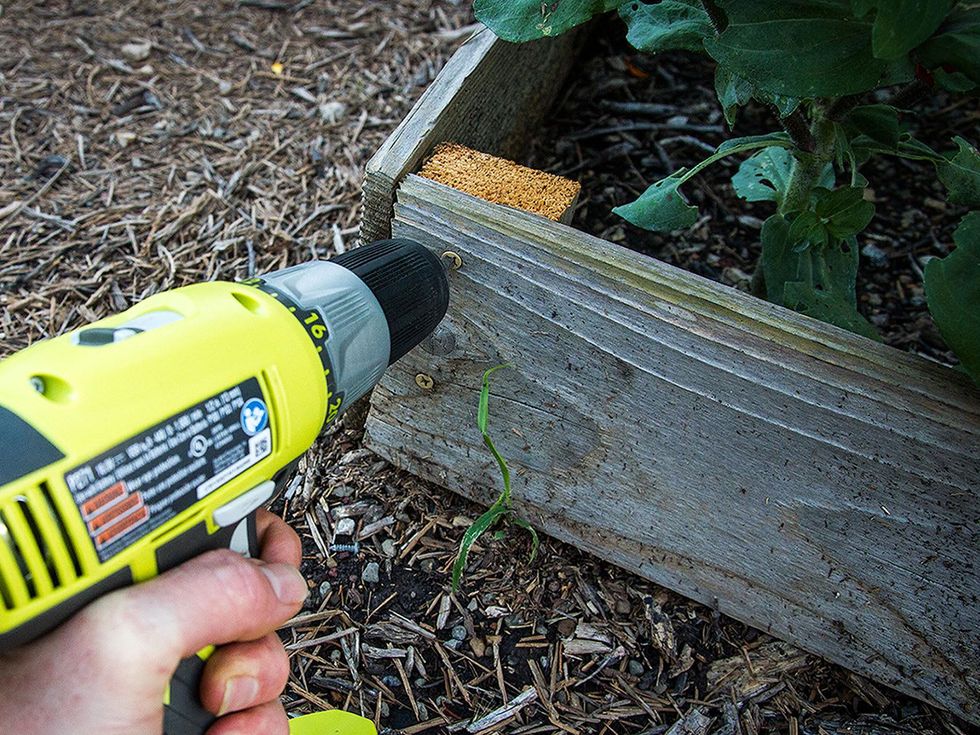The Farmer Diaries
Texas farmer checks off crucial wintertime tasks to ensure harvest success
Although cold winter days and freezing precipitation may be in the weather forecast, the Texas-based urban farmer begins each year's growing season by mid-January. Just as bluebonnets have already sprouted and grown roots in the cold soil so they can bloom at the first hints of warmer weather, the urban farmer prepares for the average frost-free days of March well ahead of jacket-free temperatures.
To wait until spring is to already be behind.
Because I plan for this year's garden haul to be sufficient enough to make 2015 my best year ever and to compensate for my failure last year, I'll begin this week to check off all of the tasks on my wintertime agenda.
Starting transplants
Because I prefer to grow varieties of vegetables and herbs that are never found on garden center shelves, I have to sow the seeds I've ordered from my favorite sources in my own small pots and six-pack starter trays. My goal each year is to start all my seed by January 15. After the week or two that it takes seed to germinate in a cool but not cold greenhouse, each seedling will have about two months to grow in a protected environment before being set out when the weather is right, usually at the end of March.
This head start allows tomatoes and other garden plants to begin yielding fruit by May, whereas tomato seedlings started directly in the garden outdoors in the spring might not have a tomato ready to pick until June or even July. There are just a handful of veggies and flowers that need such a start, such as tomatoes, peppers and eggplants, because they require such a long initial period of growth before they bloom and set fruit.
I don't bother with rapid growers such as cucumbers, squash and melons, because they can grow as fast when they're directly sown in the garden in the spring as when they're transplanted.
Maintenance and repairs
For me, once spring arrives and I'm still trying to keep up with all of the maintenance needs of a large garden and a small farm, I've already set myself up for a hard climb uphill. So I like to fix what's broken ahead of time.
My tasks this year include repairing several raised bed garden frames that have broken down from mishaps. Also, I will not go through another year with dull pruning shears and mower blades; I'm taking them to my local lawn equipment shop to have them sharpened. There are also hoses that have sprung leaks; they're too good to throw away and still have a lot of life left in them, so I'll mend them with a few hose repair kits.
The job I look forward to the least is repairing and tacking back down huge swaths of landscaping cloth that I use between garden beds and anywhere I want to keep weed-free. After several years, the mulch on top of the cloth has decomposed, leaving the cloth bare and free to flap around on windy days. Unless I just throw aesthetics to the wind, I'll need to tackle this task and get it under control,
Bed prep
I used to think that I should let nature nourish my garden plants, so I'd till my raised garden beds a little, plant my seeds or transplants into the soil in the spring, and let the rain and sunshine feed them what they need.
Such an approach will work, a little. But just to try out a few organic soil amendments one year, I added soft rock phosphate, sul-po-mag (a compound of sulfur, magnesium and potassium), and an alfalfa meal source of nitrogen to a few raised beds. The results were striking as the plants that grew on the prepared beds were larger, healthier, and more pest-resistant and drought-tolerant than any plants I'd tended before. Most of all, they bloomed and yielded the most tomatoes, squash, watermelons and peppers I'd ever picked.
Since then, I've learned that all soil around the world has, at the most, about four years worth of nutrients in it before garden cultivars planted year after year suck up all there is. Without an input of the basic elements the plants need, crops will be malnourished in subsequent years.
I amend my garden beds with only organic soil amendments, not synthetic fertilizers that add salts to the soil and make it inhospitable to plants after a few years of accumulation. Because most organic soil amendments must be broken down by soil microbes and the weather in order to be utilized by plant roots, they need to be added a few weeks before seeds are sown or transplants are planted in the beds. If the soil dries out enough for me to work my list of dirty seven soil amendments into the beds sometime this month, I'll not miss my chance.
Sprucing up
Near my raised bed garden and in a few places nearby, I've planted native perennials to make everything look nice and feed the bees, butterflies and hummingbirds with a natural and continuous source of nectar. In the winter, though, most of these natives die back to their roots, leaving dense, dead growth above ground that's prone to looking tangled and unsightly.
I'll begin to prune shrubby plants by about the end of January so that the growth that starts back up in spring will come in compact and lush. Some of the landscaping plants do not put leaves back out onto old growth but shoot up new stems from the roots; these will need to have last year's stems and dead leaves removed so that the new growth will not be impeded in a few months.
I'm still reluctant to prune. There's something in me that feels like nature knows best. But pruning helps deciduous plants and mimics how rabbits, deer and wind and ice trim limbs and stems back. I always hate to cut healthy plants — until I see how much better they look when spring brings them back to life.



